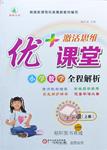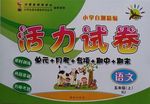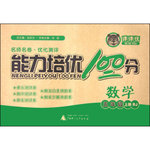题目内容
16.A bite from a tsetse fly is an extremely unpleasant experience.To make matters worse,several species of tsetse fly can transmit diseases.One of the most dangerous is a parasite(寄生虫)that causes"sleeping sickness".After the initial bite,sleeping sickness symptoms often start with a fever,headaches and aching muscles.As the illness goes on,those infected become increasingly tired,which is where it gets its name.
It is worth noting that sleeping sickness is no longer as deadly as it once was.In the early 20th Century several hundred thousand people were infected each year.By the 1960s the disease was considered"under control"and had reached very low numbers,making its spread more difficult.But in the 1970s there was another major infection,which took 20 years to control.Since then,better screening programs and earlier treatments have reduced the number of cases dramatically.In 20 is this figure dropped to fewer than 3,000.The World Health Organization (WHO) hopes the disease will be completely removed by 2020.More problematically,a series of new studies have shown that the parasite is more complicated than previously believed.
Sleeping sickness has always been considered-and analyzed-as a blood disease,because the parasites can readily be discovered in the blood of its victims.However,in a recent study found that the parasite can stay in the skin and fat,as well as in the blood.There may even be a higher density(密度)of the parasite in the skin than in the blood.That means a person can have no symptoms but still both harbor the disease and spread it.The finding could explain the mysterious 1970s infection,and why the disease can spring up in areas that had previously been cleared.
28.What's the danger of a tsetse fly bite?B
A.It makes people sleepy.
B.It causes skin disease.
C.It brings about deaths.
D.It transmits deadly parasites.
29.What can we infer about sleeping sickness from Paragraph 3?D
A.It's still a threat to human health.
B.It's not that dangerous at present.
C.It's incurable in the early 20th century.
D.It's completely under control in the 1960s.
30.What does the underlined"harbor"most probably mean?A
A.carry
B.resist
C.exchange
D.hide
31.What does the latest research indicate according to the passage?D
A.Sleeping sickness is a blood disease.
B.Skin is more suitable for the parasite to grow.
C.Sleeping sickness can be spread with no signs.
D.Parasites in the skin caused the 1970s infection.
分析 本文属于说明文阅读,作者通过这篇文章主要向我们描述了1970年代被采采蝇咬伤很容易感染疾病,传播病菌,一定要小心.
解答 28.B.细节理解题.根据最后一段There may even be a higher density(密度)of the parasite in the skin than in the blood可知一个采采蝇叮咬的危险是引起皮肤疾病;故选B.
29.D.细节理解题.根据第三段By the 1960s the disease was considered"under control"and had reached very low numbers,making its spread more difficult可知直到上世纪60年代这种昏睡病才得到控制;故选D.
30.A.词义猜测题.根据最后一段That means a person can have no symptoms but still both harbor the disease and spread it可知这意味着一个人可以没有症状,但仍携带疾病病菌并且可以传播它;意为携带;故选A.
31.D.推理判断题.根据文章The finding could explain the mysterious 1970s infection,and why the disease can spring up in areas that had previously been cleared可知最新的研究表明了是皮肤上的寄生虫引起了1970年的感染;故选D.
点评 考察学生的细节理解和推理判断能力,做细节理解题时一定要找到文章中的原句,和题干进行比较,再做出正确的选择.在做推理判断题不要以个人的主观想象代替文章的事实,要根据文章事实进行合乎逻辑的推理判断.

 激活思维优加课堂系列答案
激活思维优加课堂系列答案 活力试卷系列答案
活力试卷系列答案 课课优能力培优100分系列答案
课课优能力培优100分系列答案-I think the former one is no better than the latter one.So I'll choose_______.( )
| A. | the former one | B. | the latter one | C. | either of them | D. | neither of them |
Multitasking(多任务),as many studies have shown,is a myth(谬论).A more accurate(37)Bof what happens when we tell ourselves we are multitasking is that we're rapidly (38)A between activities,sucking our mental energy.And the(39)Ccan be surprisingly serious.An experiment found that we lose as many as 10IQ points when we allow our work to be(40)D by distractions like emails and text messages.
The(41)Cis that multitasking is enjoyable.It's fun to satisfy your curiosity.Who knows what that next email or text message holds(42)B?Finding out provides immediate satisfaction.(43)D,resisting distractions and staying on task requires (44)Band mental effort.
So,what are we to do?
Our strategy is to change the(45)Cto move temptation further away:shut down your email program or(46)Byour phone.It's a lot easier to stay on task when you're not(47)Afighting off mental desires.
The alternative,which most of us consider common,is(48)Ato dieting in a bakery.We all need the willpower to resist the temptations,but doing so comes with(49)Ccosts to our limited supply of willpower.
Another worthwhile (50)Dis to collect similar activities together,keeping transition (转换) time to a(51)A point.Instead of spreading phone calls,meetings and emails throughout your day,try(52)B related tasks so that there are fewer transitions.
In some jobs,multitasking is(53)C.Some of us truly do need to stay(54)Dto our clients,colleagues and managers.So it's worth noting that limiting disruptions is the only solution.
Remember the more you do to minimize task-switching over the course of the day,the more ability you'll have for activities that actually(55)A.Even small changes can make a big difference.
| 36.A.initial | B.personal | C.inner | D.ambitious |
| 37.A.plan | B.account | C.prediction | D.insight |
| 38.A.switching | B.swinging | C.swapping | D.shuttling |
| 39.A.benefits | B.reasons | C.consequences | D.challenges |
| 40.A.guided | B.changed | C.adapted | D.interrupted |
| 41.A.advantage | B.emphasis | C.trouble | D.practice |
| 42.A.in stock | B.in store | C.in check | D.in possession |
| 43.A.As a rule | B.As a result | C.In short | D.In contrast |
| 44.A.patience | B.discipline | C.courage | D.attention |
| 45.A.expectation | B.task | C.environment | D vision |
| 46.A.replace | B.silence | C.answer | D.pick |
| 47.A.continuously | B.finally | C.passionately | D.directly |
| 48.A.similar | B.relevant | C.superior | D.opposite |
| 49.A.affordable | B.basic | C.considerable | D.modest |
| 50.A.research | B.aspect | C.reaction | D.approach |
| 51.A.minimum | B.maximum | C.turning | D.fixed |
| 52.A.analyzing | B.grouping | C.assigning | D.undertaking |
| 53.A.disturbing | B.annoying | C.unavoidable | D.unnecessary |
| 54.A.sympathetic | B.loyal | C.accustomed | D.connected |
| 55.A.matter | B.function | C.work | D.interfere |